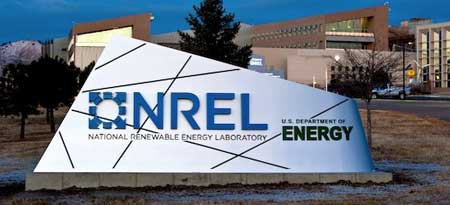The U.S. Department of Energy Secretary Ernest Moniz announced up to $220 million in new funding for a consortium of DOE national laboratories and partners to support critical research and development over the next three years to help modernize our nation’s electrical power grid.
The secretary also announced the release of DOE’s comprehensive new Grid Modernization Multi-Year Program Plan (MYPP), a blueprint for the Department’s research, development, and demonstration agenda to enable a modernized grid. The National Renewable Energy Laboratory (NREL) will be strongly supporting this effort, bringing its unique array of experts and resources together to participate in 48 of the 88 awarded projects announced today.
“Modernizing the U.S. electrical grid is essential to reducing carbon emissions, creating safeguards against attacks on our infrastructure, and keeping the lights on,” Secretary Moniz said at the announcement. “Our Quadrennial Energy Review and Quadrennial Technology Review identified needs and opportunities to invest in the grid. This public-private partnership between our National Laboratories, industry, academia, and state and local government agencies will help us further strengthen our ongoing efforts to improve our electrical infrastructure so that it is prepared to respond to the nation’s energy needs for decades to come.”
The Grid Modernization Laboratory Consortium (GMLC) involves 14 DOE National Laboratories and dozens of industry, academia, and state and local government agency partners across the country. The new research funding announced today is being awarded in response to a challenge by DOE to the National Laboratories to establish, through the GMLC, a comprehensive grid-related research and development effort to address a range of emerging challenges and opportunities in the nation’s power grid.
“Our 21st century economy needs a modernized grid,” said NREL Associate Laboratory Director Bryan Hannegan and co-chair of the GMLC. “The Grid Modernization Laboratory Consortium is a new way of efficiently leveraging the strengths and capabilities of America’s national laboratories to deploy new concepts and technologies that will make the grid cleaner, more productive, and more secure. The projects announced today are an important first step towards achieving the DOE vision of a modernized grid for the nation.”
DOE’s Energy Systems Integration Facility (ESIF) and National Wind Technology Center (NWTC), both located at NREL, will be key facilities for developing new technologies and serving as a testing center for the deployment of grid technologies. ESIF and the NWTC house a powerful collection of state-of-the-art capabilities that support the development, evaluation, and demonstration of innovative clean energy technologies.
A full list of projects, participating laboratories and partners, and more information on the Grid Modernization Initiative are available at energy.gov/doe-grid-modernization-laboratory-consortium-gmlc-awards. Some of the outcomes of these projects will include:
– A national network of laboratory facilities for use in testing and validation of emerging grid-related technologies and systems.
– New common standards and test procedures to ensure that emerging grid technologies can communicate with one another and work together to provide energy services to customers.
– New decision support tools for integrated planning and operation of distributed energy technologies, such as solar, demand response, and smart consumer appliances.
– Advances in grid design and planning tools to take into account the increasing number of emerging technologies being deployed on the grid in homes, businesses, and communities.
– Optimal approaches for integration of wind turbines, solar PV systems, smart buildings, electric and fuel cell vehicles, and hydrogen technologies into a modernized grid.
– A new testbed for development of advanced distribution management systems that will allow grid operators to more effectively utilize grid assets, increase resilience and reliability, and enable a wider choice of energy services for consumers.
This article has been published here by the PVBuzz Media team from the original news release from NREL.
The research was funded by the U.S. Department of Energy SunShot Initiative as part of a joint project of Georgia Institute of Technology, Fraunhofer ISE, and NREL, with a goal to develop a record efficiency silicon solar cell.
The SunShot Initiative is a collaborative national effort that aggressively drives innovation to make solar energy fully cost-competitive with traditional energy sources before the end of the decade. Through SunShot, DOE supports efforts by private companies, universities, and national laboratories to drive down the cost of solar electricity to $0.06 per kilowatt-hour.
NREL is the U.S. Department of Energy’s primary national laboratory for renewable energy and energy efficiency research and development. NREL is operated for the Energy Department by The Alliance for Sustainable Energy, LLC.












Comments